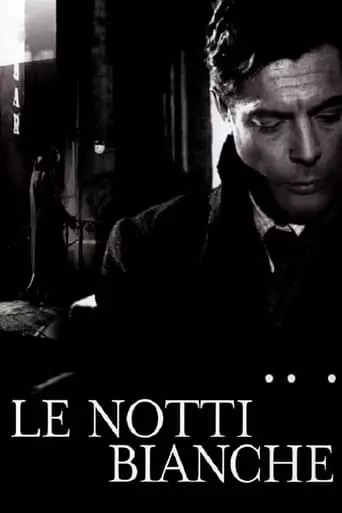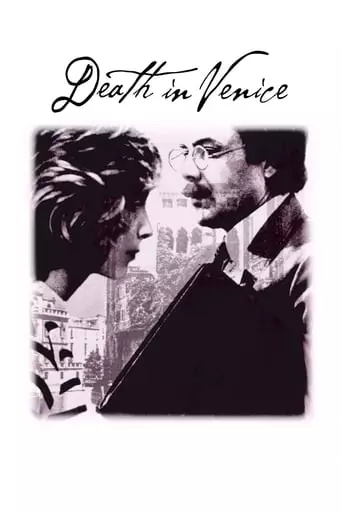Gino, a drifter, begins an affair with inn-owner Giovanna as they plan to get rid of her older husband. Ossessione (1943), directed by Luchino Visconti, is a seminal work in […]

Gino, a drifter, begins an affair with inn-owner Giovanna as they plan to get rid of her older husband. Ossessione (1943), directed by Luchino Visconti, is a seminal work in […]

A middle-aged man meets a young woman who is waiting on a canal bridge for her lover’s return. Le Notti Bianche (1957), directed by Luchino Visconti, is an evocative romantic […]

Composer Gustav von Aschenbach travels to Venice for health reasons. There, he becomes obsessed with the stunning beauty of an adolescent Polish boy named Tadzio who is staying with his […]

When a impoverished widow’s family moves to the big city, two of her five sons become romantic rivals with deadly results. Rocco and His Brothers (1960), directed by Luchino Visconti, […]

As Garibaldi’s troops begin the unification of Italy in the 1860s, an aristocratic Sicilian family grudgingly adapts to the sweeping social changes undermining their way of life. Proud but pragmatic […]
Luchino Visconti: The Master of Elegance and Epic Cinema
Luchino Visconti (November 2, 1906 – March 17, 1976) was an Italian director, screenwriter, and playwright whose films are celebrated for their sumptuous visuals, emotional depth, and exploration of themes such as class, identity, and decadence. A pioneer of Italian neorealism and later a master of opulent period dramas, Visconti’s work reflects a unique blend of political awareness and artistic grandeur. With masterpieces like La Terra Trema (1948), The Leopard (1963), and Death in Venice (1971), Visconti cemented his place as one of the most influential filmmakers of the 20th century.
Early Life and Artistic Foundations
Born into one of Italy’s wealthiest aristocratic families in Milan, Visconti grew up surrounded by art, culture, and privilege. His family’s wealth and status provided him access to Europe’s elite, but it also exposed him to the sharp contrasts between the lives of the upper and lower classes—an awareness that would profoundly shape his work.
Visconti initially pursued interests in music and equestrianism before turning to the arts. A pivotal moment came in the 1930s when he moved to Paris and worked with the legendary French director Jean Renoir. Under Renoir’s mentorship, Visconti developed an appreciation for realism and a commitment to socially conscious storytelling.
Italian Neorealism and Early Films
Visconti’s debut feature, Ossessione (1943), is widely regarded as the precursor to Italian neorealism. Loosely based on James M. Cain’s novel The Postman Always Rings Twice, the film depicted the bleak lives of working-class Italians with raw emotional intensity. Its unvarnished portrayal of adultery, murder, and poverty shocked audiences and earned the ire of Mussolini’s Fascist regime, which banned the film.
Visconti followed this with La Terra Trema (1948), a neorealist masterpiece that chronicled the struggles of Sicilian fishermen against economic exploitation. Shot with nonprofessional actors and using the Sicilian dialect, the film is both a deeply human story and a critique of systemic inequality. Though not a commercial success, La Terra Trema is hailed as one of the defining works of neorealism.
Transition to Grand Historical Epics
In the 1950s and 1960s, Visconti transitioned from neorealism to creating lavish period dramas that reflected his love for literature, opera, and art. These films, while retaining his political and social concerns, showcased a more stylized and theatrical approach.
Senso (1954): A tragic romance set against the backdrop of the Italian unification, this film is noted for its lush cinematography and exploration of betrayal and moral decay.
Rocco and His Brothers (1960): A poignant family saga, this film examines the tensions between tradition and modernity as a family of Southern Italian immigrants struggles to adapt to life in industrialized Milan. Alain Delon’s performance as the sensitive Rocco remains one of the most memorable in Visconti’s oeuvre.
The Leopard (1963): Based on Giuseppe Tomasi di Lampedusa’s novel, this epic film chronicles the decline of the Sicilian aristocracy during Italy’s Risorgimento. Starring Burt Lancaster, Claudia Cardinale, and Alain Delon, The Leopard is a visual and narrative masterpiece. It won the Palme d’Or at the Cannes Film Festival and is often considered Visconti’s magnum opus.
Later Works: Decadence and Mortality
Visconti’s later films delve into themes of decadence, existential despair, and the passage of time. These works reflect a more introspective and somber tone, often focusing on characters grappling with their own mortality and the decay of their surroundings.
Death in Venice (1971): An adaptation of Thomas Mann’s novella, this film follows Gustav von Aschenbach (played by Dirk Bogarde), a composer obsessed with a young boy he encounters during a stay in Venice. The film’s meditative pace, stunning visuals, and use of Gustav Mahler’s music create an atmosphere of haunting beauty.
The Damned (1969): A dark and controversial exploration of the rise of Nazism through the lens of a corrupt German industrialist family, this film is both operatic and chilling in its portrayal of moral and societal collapse.
Ludwig (1973): A biographical drama about King Ludwig II of Bavaria, the film examines the monarch’s artistic passions, political struggles, and tragic downfall. It is a richly detailed exploration of obsession and isolation.
Style and Themes
Visconti’s films are characterized by their meticulous attention to detail, grand visual style, and deep engagement with themes of power, class, and human frailty. He often explored the intersection of personal and political struggles, portraying characters caught between their desires and societal expectations.
Visual Grandeur: Visconti’s background in opera and art is evident in his use of sumptuous set designs, period costumes, and painterly compositions. His films are as much a feast for the eyes as they are emotionally resonant.
Class and Decadence: Many of Visconti’s works critique the decadence of the aristocracy and explore the shifting dynamics of power and privilege, reflecting his own complex relationship with his aristocratic roots.
Existential and Emotional Depth: Whether depicting the struggles of fishermen or the existential crises of European elites, Visconti imbued his characters with profound emotional complexity.
Legacy and Influence
Luchino Visconti’s impact on cinema is profound and far-reaching. His ability to merge political consciousness with artistic elegance has inspired filmmakers such as Bernardo Bertolucci, Martin Scorsese, and Luca Guadagnino. Visconti’s works remain a testament to the power of cinema to blend beauty and substance, creating films that are both intellectually engaging and emotionally moving.
Conclusion
Luchino Visconti was a filmmaker of unparalleled vision and ambition. From the raw realism of La Terra Trema to the opulent splendor of The Leopard and the haunting introspection of Death in Venice, his films continue to captivate audiences and influence generations of filmmakers. As a director who bridged the worlds of neorealism and grand historical drama, Visconti’s legacy endures as a cornerstone of cinematic artistry.